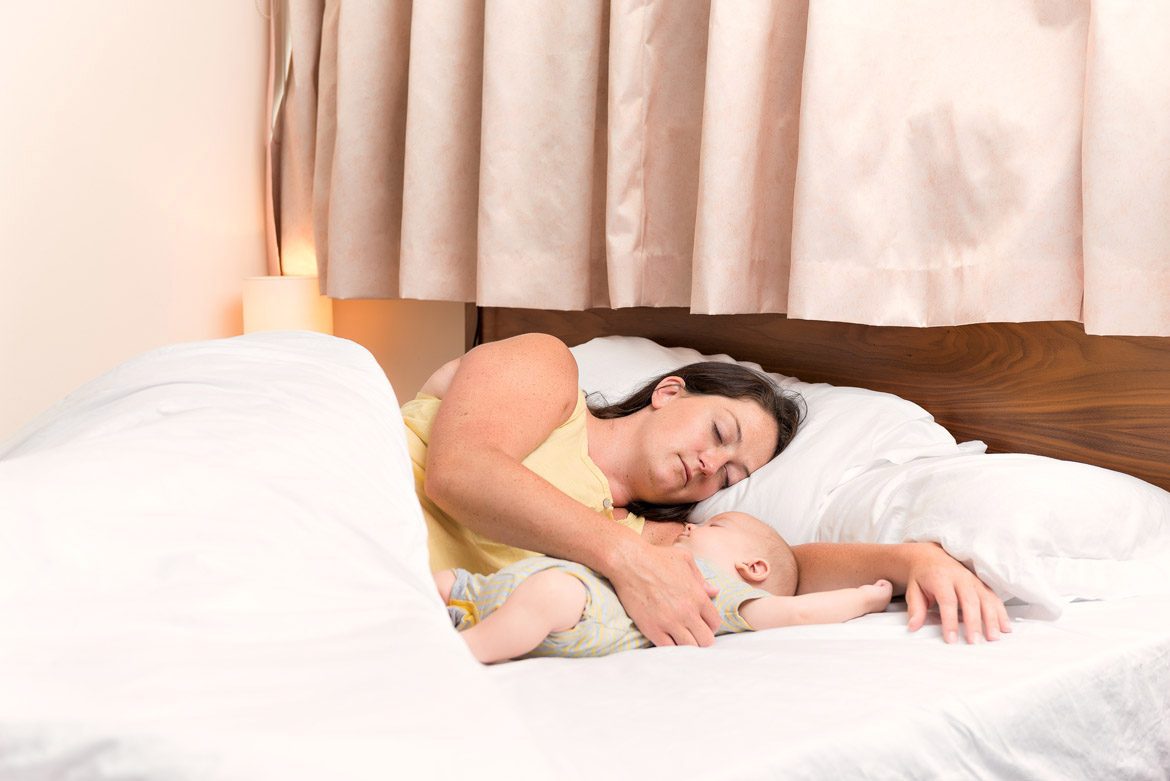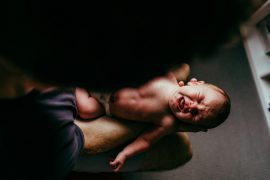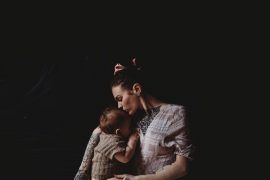By Mary Francell
“It is a primitive need of the child to have close and warm contact with another person’s body while falling asleep…. The infant’s biological need for the caretaking adult’s constant presence is disregarded in our Western culture, and children are exposed to long hours of solitude owing to the misconception that it is healthy for the young to sleep … alone.”
– Anna Freud, daughter of Sigmund Freud
Where should babies sleep? In Western cultures, like those in the US and Europe, the answer is usually in a crib, by itself, often in another room. But why? Two adults in a romantic relationship often share a bed – how does it make sense that a tiny, vulnerable person has to sleep alone?
In other parts of the world, this is not even a question – babies sleep with someone. Even in Western cultures the idea of solitary infant sleep has only become expected during the last hundred years or so.
To understand biologically normal sleep for human babies, we need to first look at our cousins in the animal kingdom. Some mammals give birth to atricial infants after a short gestation – deaf, hairless and sightless, they develop rapidly in nests or a pouch. Others are precocial, well developed and able to stand or hold on to their mothers almost immediately after birth.
Like many primates, humans are mostly precocial, but also have atricial traits like not being able to walk or cling, mainly due to being born with only 25% of their brain capacity (for more information, see Babies Need to Be Held, 10-14-17). Primate infants even rely on contact with their caregivers to regulate their heart rate, temperature and breathing.
All land mammal mothers sleep close to their babies, although some, like deer and rabbits, have high fat milk that allows them to hide their babies for long periods while they forage for food. The young of these “feed and leave” species don’t cry or defecate in mother’s absence so as not to draw the attention of predators.
However, contact/carry species like marsupials and primates (including humans) do eliminate spontaneously and cry when separated from their mothers. This, along with low fat milk that necessitates frequent feeding, means that these babies need to be kept close at all times, including at night. A human baby who wakes up and cries to protest being alone does so for a very good reason – survival!
In addition to physical regulation, primate infants also need contact for psychological wellbeing. This was first demonstrated by Harry Harlow with his famous experiment in which rhesus monkey babies separated from their mothers clung to a cloth covered “surrogate mother” rather than a wire one that dispensed food. More recent research points to a spike in cortisol in babies left to cry without being comforted, which could effect an infant’s developing brain.
From studying primates and the few remaining hunter-gatherer cultures, anthropologists have concluded that it is biologically normal for a human baby to sleep next to another person, usually its mother. So how did solitary infant sleep come to be considered normal and desirable in Western societies? We will explore that in the next What Babies Need.











